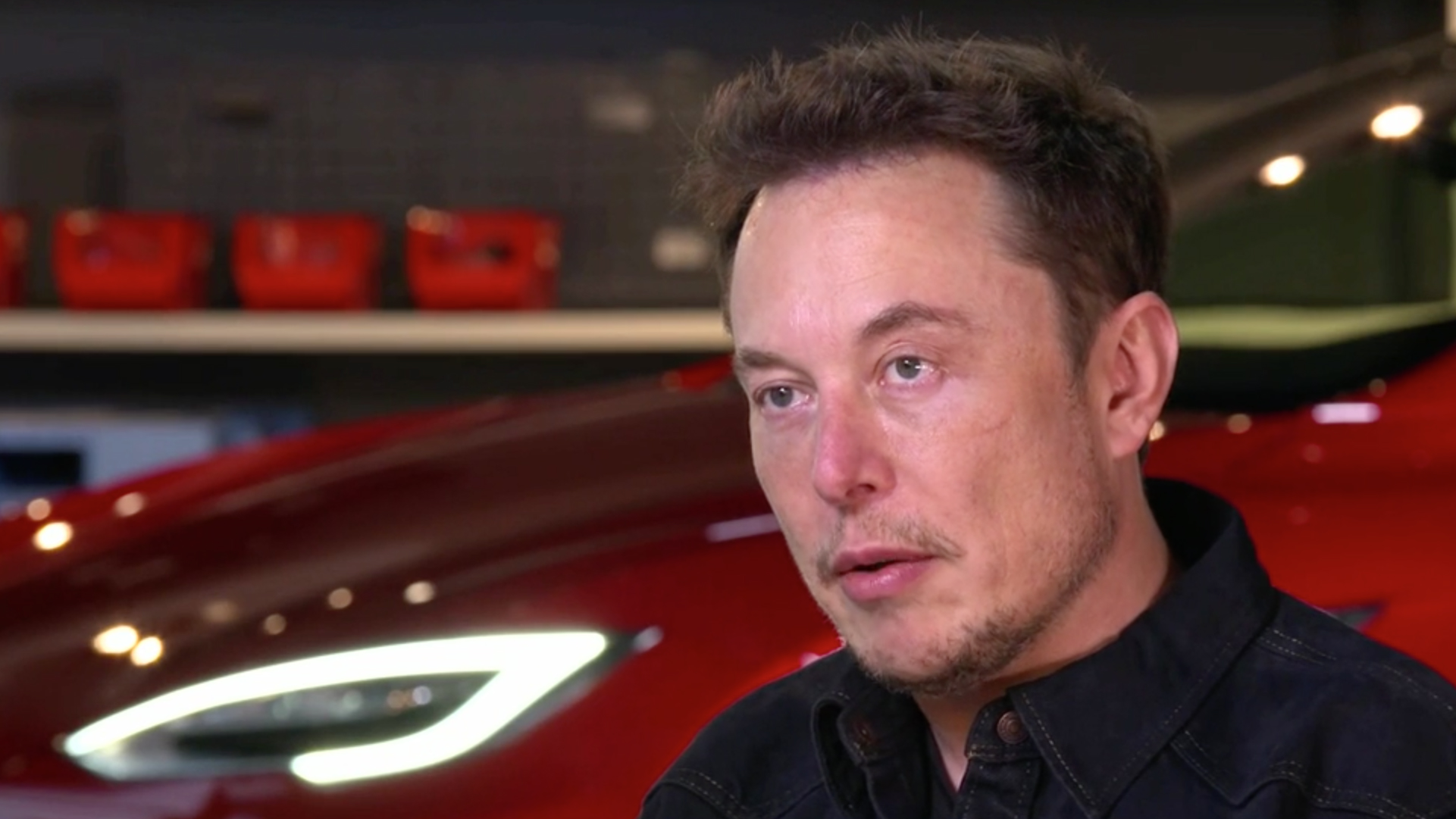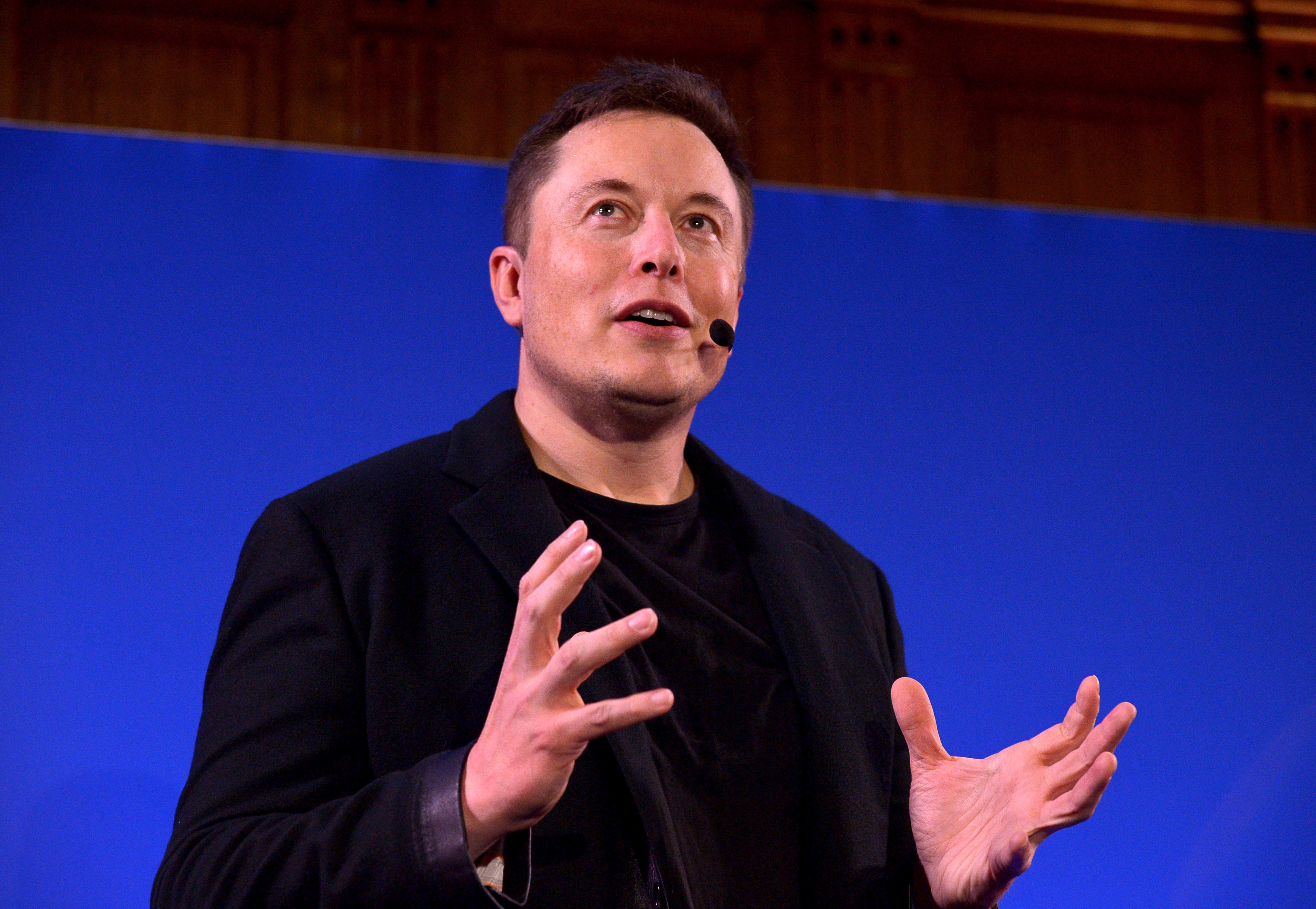5 highlights from Elon Musk’s appearance on the Joe Rogan Experience

In a landmark episode of one of the world’s most popular podcasts, Tesla and SpaceX CEO Elon Musk appeared on the Joe Rogan Experience for a sprawling conversation that touched on topics ranging from the inner workings of neural-link technology to the differences between a joint and a blunt.
Musk, who recently made headlines for expressing his desire to take Tesla private, was one of the show’s most requested guests of all time according to Rogan, who, sporting an uncharacteristically dressy pink button-up shirt for the occasion, offered his guest whiskey on ice and an oversized blunt midway through the episode.
“Want some of it?” Rogan asked. “You probably can’t because of stockholders, right?”
“I mean it’s legal, right?” Musk confirmed before taking a hit.
The interview took place on Thursday night.
By Friday morning, shares of Tesla had dropped about 6% and two executives had resigned from the company, though it’s unclear whether Musk’s interview played any part in the resignations.
In any case, the discussion lasted about two-and-a-half hours, covering subjects like the future of A.I., climate change, flamethrowers, sports cars, a design for an electric plane, and a potentially groundbreaking upcoming announcement about neural-link technology.
Here are a few highlights of what’s sure to be one of Rogan’s most memorable shows:
The main danger of A.I. is humans weaponizing it against each other
Musk has long warned of the dangers posed by A.I. In March, he told a crowd at South by Southwest that A.I. is far more dangerous than nuclear weapons and that the government should move to regulate A.I. development.
“I am not normally an advocate of regulation and oversight—I think one should generally err on the side of minimizing those things—but this is a case where you have a very serious danger to the public,” said Musk.
But the main danger, according to Musk, isn’t A.I. turning against humans.
“The thing that’s going to be tricky here is that it’s going to be very tempting to use A.I. as a weapon,“ Musk said. “The danger is going to be humans using it against each other.”
Musk added in another part of the podcast, “I tried to convince people to slow down, slow down A.I., to regulate A.I,” Musk said. “This was futile. I tried for years. Nobody listened.”
“This seems like a scene in a movie where the robots are gonna fuckin’ take over and you’re freakin’ me out,” Rogan said. “Nobody listened,” Musk said.
Musk plans to soon reveal a major development in neural-link technology
If you can’t beat A.I., join it.
That’s Musk’s basic argument for why the best-case scenario for the future of A.I. would be to find a way for humans to merge with machines. In some ways, we already have: Our smartphones could be considered extensions of ourselves.
But this relationship with A.I. suffers from a bandwidth problem.
“You just can’t communicate through fingers, it’s too slow,” Musk said.
The goal is to vastly improve the communication channel between our biological and digital selves, something that could be achieved through neural-link technology, which could help control the evolution of both mankind and A.I. over the long term.
“From a long-term existential standpoint, that’s like the purpose of neural link, is to create a high-bandwidth interface to the brain such that we can be symbiotic with A.I.,” Musk said. “Because we have a bandwidth problem—you just can’t communicate through fingers, it’s too slow.”
Rogan asked about the current state of neural link.
“I think we’ll have something interesting to announce in a few months that’s at least an order of magnitude better than anything else, probably better than anyone thinks is possible,” Musk said.
Not wanting “jump the gun” on giving further details, Musk offered a general long-term vision for what the technology might look like: one that adds an artificial third layer of cognition to the brain—an “A.I. extension of yourself”—that works in a symbiotic relationship with the cortex and limbic system. He continued:
“That could be quite a positive outcome for the future. It will enable anyone who wants to have superhuman cognition. Anyone who wants [it]. This is not a matter of earning power because your earning power would be vastly greater after you do it, so, it’s just like anyone who wants can just do it, in theory. That’s the theory. And if that’s the case, and let’s say billions of people do it, then the outcome will be the sum of human will. The sum of billions of people’s desire for the future.”
Society is playing a “crazy game” with the planet
Musk said that implementing electric cars sooner rather than later should be a priority in the shift toward more sustainable energy.
“We’re really playing a crazy game here with the atmosphere and the oceans. We’re taking vast amounts of carbon from deep underground and putting this […] in the atmosphere, this is crazy. We should not do this. It’s very dangerous. We should accelerate the transition to sustainable energy. I mean the bizarre thing is that obviously we’re going to run out of oil in the long term. There’s only so much oil we can mine and burn. That’s tautological, we must have a sustainable energy transport and energy infrastructure in the long term. So we know that’s the end point, we know that. So why run this crazy experiment where we take trillions of tons of carbon from underground and put it in the atmosphere and oceans. This is an insane experiment. It’s the dumbest experiment in human history. Why are we doing this? It’s crazy.”
The online landscape is a projection of the id
The most successful online platforms, Musk says, are ones that resonate with our limbic system—a part of the brain that deals primarily with emotion, stimulation, and memory. These systems, such as social media, represent an increasing share of society’s total intelligence.
“Imagine all those things, the sort of primal drives, there’s all the things that we like and hate and fear, they’re all there on the internet,” Musk said. “They’re a projection of our limbic system.”
Once A.I. becomes dangerous, it will be too late to regulate it
It takes many years of commissions, rule-making, and implementation before the government actually begins regulating an industry, Musk said. Using seat belt laws in the automobile industry as an example, he noted that it took a decade before regulations were actually put in place.
“This time frame is not relevant to A.I.,” Musk said. “You can’t [regulate it] 10 years from the point at which it’s dangerous. It’s too late.”
Still, it’s anyone’s guess as to what happens when A.I. reaches something like critical mass, or the so-called singularity.
“It’s hard to predict, like a black hole, what happens past the event horizon. Once the genie’s out of the bottle, what’s going to happen? […] It could be terrible, and it could be great. It’s not clear. One thing is for sure: We will not control it.”





